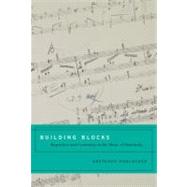A pioneer of musical modernism, Igor Stravinsky marked a significant turn in compositional method. He broke free from traditional styles and contemporary trends in the early part of the twentieth century to achieve an entirely new and truly modern aesthetic. Striking a remarkable concurrence of stasis and discontinuity, Stravinsky crafted large-scale compositions out of short repeating melodies, juxtaposed these primary motives with contrasting and varying fragments, and layered on fixed ostinati which repeated at their own rates throughout the piece. Previous scholarship on Stravinsky focuses on the disparate and independent nature of such textures, conceiving them as separated and deadlocked, unable to escape their repetitions, and having no goal. This connects Stravinsky's procedures with the more radical music of subsequent composers for whom disconnection has served as a primary aesthetic.
Yet, from the perspective of his later works, the static and discontinuous depictions of Stravinsky's music seem incomplete and perhaps even simplistic. The "building blocks" of his novel textures often consist of tunes with identifiable intervallic shapes, goal pitches, and defining durational patterns-organizations that engender continuity and connection. In other words, although its basic materials are combined into new, often dissonant and usually repetitive textures, those materials still originate in, and depend upon, traditional concepts of melody, harmony, and pulsation.
Presenting an innovative analytical model for Stravinsky's compositions, Building Blocks seeks a fuller perspective, and enables a fresh, insightful approach to this music and the theoretical constructs behind it. Author Gretchen Horlacher portrays the whole of Stravinsky's repertoire as radical or modern not because it eschews continuity and connection, but because it places them in relation to their opposites: the music holds our interest because undeniable references toward continuity are dynamically coordinated (rather than subsumed) with stasis and discontinuity. Stravinsky's music thus becomes a commentary on the nature of time: the music draws into relation the tension between time as it is punctuated by fixed reference and as it flows from one event to another. It is quintessentially modern because of its inherent emphasis on multiple vantage points.
A sensitive and sophisticated approach to the work of this iconic composer, Building Blocks will appeal to students and scholars of Stravinsky and his music, scholars of musical modernism and twentieth century music, and to a more limited extent, to performers-particularly conductors, pianists, and orchestral instrumentalists.








